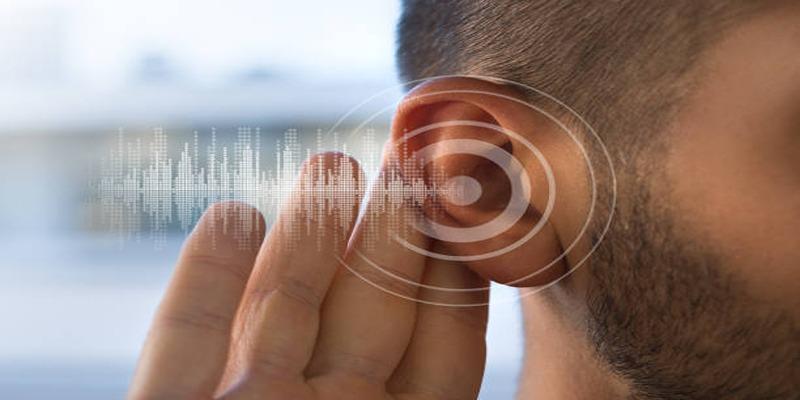Exploring Affordable Alternatives to Hearing Aids
Hearing loss can significantly impact daily life, but the high cost of traditional hearing aids often makes them inaccessible for many individuals. Fortunately, there are affordable alternatives that provide effective solutions for those in need. In this article, we will explore some of the most cost-effective options available, including personal sound amplification products (PSAPs), over-the-counter hearing aids, and supportive smartphone applications. By the end, you'll have a better understanding of these alternatives and how they can help improve your hearing without breaking the bank.
Overview of hearing loss and its impact

Hearing loss affects over 460 million people worldwide, making it one of the most common disabilities. It can occur at any age and has various causes, including genetics, noise exposure, and medical conditions. Regardless of the cause, hearing loss can have a significant impact on an individual's physical and emotional well-being.
People with hearing loss may struggle to communicate effectively, leading to isolation and feelings of frustration or depression. In addition, they may miss out on important information in daily conversations or face challenges in professional settings. Hearing loss can also affect their relationships with loved ones and their overall quality of life.
Importance of addressing affordability
Hearing loss affects millions of people worldwide and can lead to feelings of isolation, frustration, and a diminished quality of life if left untreated. However, the high cost of traditional hearing aids often prevents many individuals from seeking the help they need. Addressing affordability is critical to ensuring that hearing solutions are accessible to everyone, regardless of financial circumstances.
Affordable options empower people to take control of their hearing health, improving communication, relationships, and overall well-being. By breaking down financial barriers, we can promote inclusivity and provide life-changing support for those experiencing hearing loss.
The High Cost of Traditional Hearing Aids
The high cost of traditional hearing aids often prevents people from addressing their hearing needs effectively. Exploring alternative solutions can pave the way for more inclusive hearing care.
Why Are Traditional Hearing Aids Expensive?
The cost of traditional hearing aids can be attributed to several factors, primarily related to technology and distribution channels.
Advanced Technology and Research Costs
Traditional hearing aids are equipped with highly advanced technologies, such as noise reduction algorithms, directional microphones, and Bluetooth connectivity, aimed to offer precise sound adjustments tailored to individual needs. These devices result from extensive research and development efforts, which drive up production costs. Additionally, ensuring these devices are miniaturized yet powerful requires specialized components, further contributing to their premium pricing.
Distribution and Professional Services
Hearing aids are typically sold through licensed audiologists and distributors, who provide essential services like hearing assessments, fittings, and follow-up care. While these services ensure users get the most effective solution for their specific hearing loss, they also add to the overall expense. The inclusion of warranties and aftercare also increases the cost, making hearing aids inaccessible to many individuals who might benefit from them.
Affordable Alternatives
Overcoming the high cost of hearing aids is possible with several affordable alternatives. Below are some solutions to consider:
Over-the-counter (OTC) Hearing Devices
OTC hearing devices provide an accessible and cost-effective option for individuals with mild to moderate hearing loss. These devices can be purchased without a prescription and are typically more affordable than traditional hearing aids. They allow users to self-fit and adjust settings to meet their needs. However, users should ensure these devices meet safety and quality standards, as they lack the personalized support offered by audiologists. OTC devices are an excellent starting point for those exploring hearing assistance on a budget.
Personal Sound Amplification Products (PSAPs)
PSAPs are devices designed to amplify sound and are often much cheaper than traditional hearing aids. While not intended as medical devices, they can be useful for enhancing hearing in specific situations like conversations or outdoor activities. PSAPs are widely available and do not require tests or fittings, making them a viable alternative for those seeking basic sound amplification. However, they may not address all aspects of hearing loss and are best for individuals looking for situational support rather than full-time use.
Smartphone Apps and Technology-Based Solutions

Smartphone apps and modern technology offer innovative ways to improve hearing capabilities. Many apps allow users to amplify sounds, reduce background noise, and personalize settings to enhance hearing. Paired with Bluetooth-enabled earbuds, they provide a flexible and budget-friendly solution. Additionally, advancements like speech-to-text apps and visual alerts for sounds are further expanding accessibility. These tech-based alternatives can be customized for various needs, helping people stay connected and engaged in different environments without the higher costs of traditional aids.
Community Programs and Nonprofits Providing Assistance
Community programs and nonprofit organizations play a vital role in making hearing assistance accessible for those with limited financial resources. Many programs offer free or discounted hearing aids, assistive devices, and hearing assessments. They also provide educational resources and counseling to individuals and families navigating hearing loss. Nonprofits often collaborate with manufacturers or donors to ensure widespread access to affordable solutions. Exploring local and national programs can help individuals find the support they need without the burden of excessive costs.
Benefits and Limitations of Alternatives
When addressing hearing loss, it’s important to compare options based on features, effectiveness, and suitability. Assistive devices, like personal sound amplifiers, are affordable and provide basic sound enhancement but lack the precision of professionally fitted hearing aids. Over-the-counter hearing aids work well for mild to moderate hearing loss, offering features like volume adjustment and noise reduction at a lower cost.
Prescription hearing aids, fitted by audiologists, include advanced technology like directional microphones, Bluetooth, and personalized amplification, making them ideal for moderate to severe hearing loss. Though more expensive, they often provide better auditory clarity and quality of life for those with significant challenges. Choosing the right option depends on the degree of hearing loss, budget, and preferences.
Choosing the Right Solution
When exploring hearing assistance options, it’s important to consult a professional to assess the type and severity of hearing loss. Understanding individual needs and preferences is key to finding the right solution. While cost is a factor, it shouldn’t come at the expense of quality or effectiveness. Exploring alternatives and seeking help from community programs or nonprofits can make hearing aids more affordable. Those with hearing difficulties should consider all options to find what works best for their needs and budget.
Conclusion
Improved hearing can significantly enhance one’s quality of life by fostering better communication and stronger connections with others. While selecting the right solution may require time and research, prioritizing individual needs ensures the best outcome. With accessible options available, overcoming hearing challenges is possible for many. By taking the necessary steps, individuals can regain confidence and enjoy the sounds of life, making the effort truly worthwhile.











